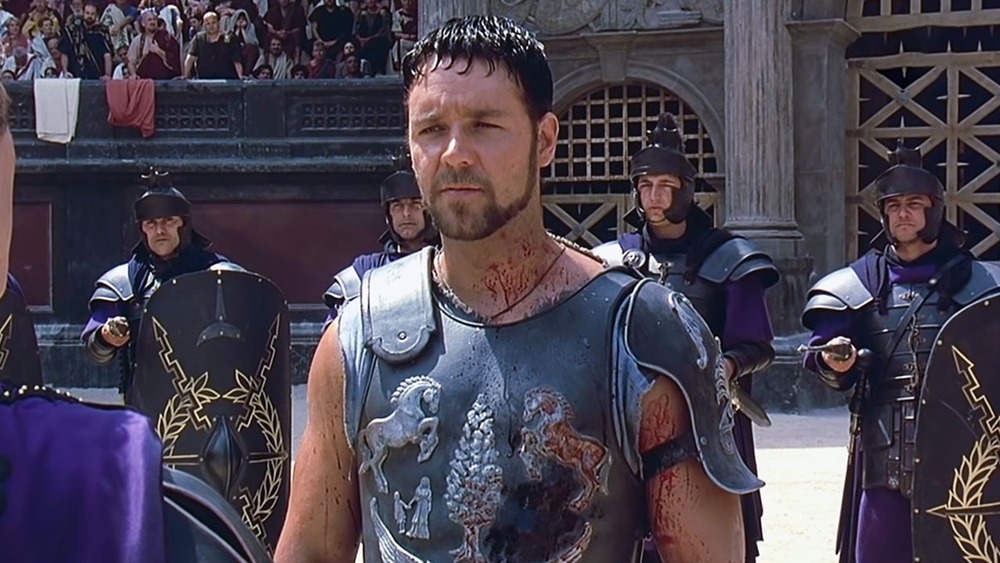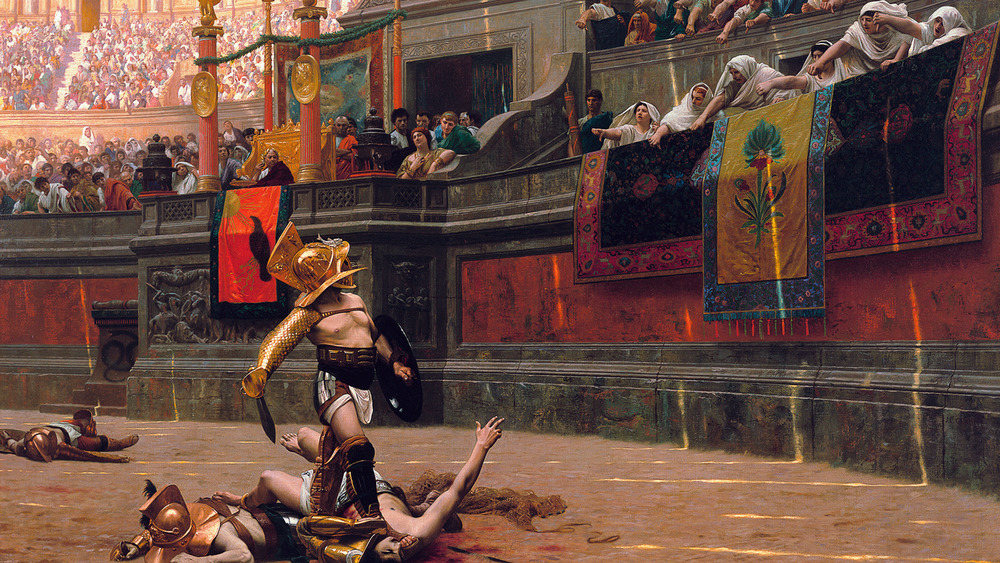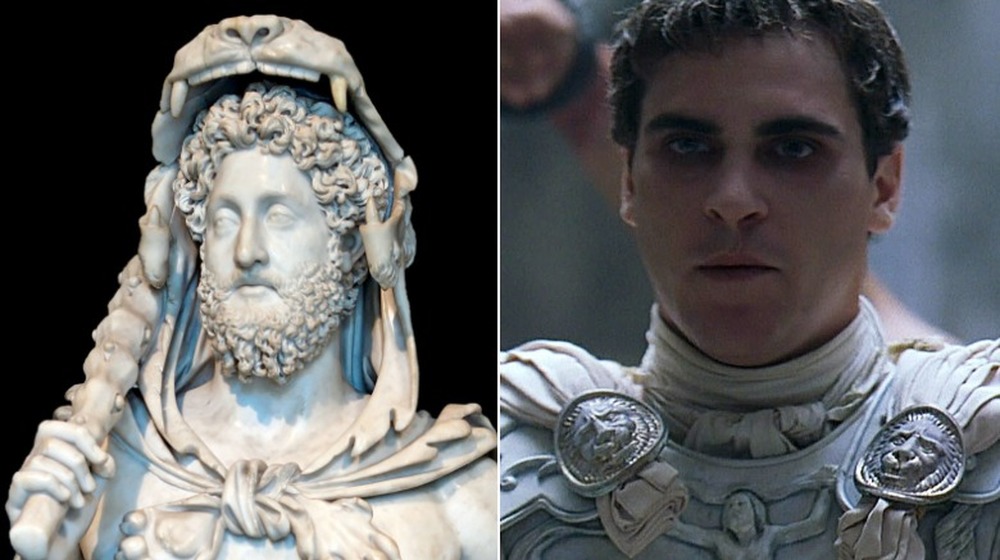Is Gladiator Based On A True Story?
In 2000, we were, indeed, entertained. We were also appalled and fascinated by director Ridley Scott's epic historical drama, Gladiator. Set in 180 CE, the Oscar darling starred Russell Crowe as (clears throat) "Maximus Decimus Meridius; commander of the armies of the north; general of the Felix Legions; loyal servant to the true emperor, Marcus Aurelius; father to a murdered son; husband to a murdered wife." In short, a Roman general-turned-gladiator — thanks to being kidnapped and enslaved — who sets out to wreak violent revenge on Emperor Commodus (Joaquin Phoenix); he would, indeed, go on to have his vengeance after the usurping emperor first murdered his own father and Maximus' leader, the aforementioned Marcus Aurelius (Richard Harris), and then Maximus' family.
Gladiator brought the brutality and battle skills of the Roman amphitheater to the 21st century and spawned legions of not-quite-as-epic sword-and-sandal sagas in its wake, including Troy, 300 and Prince of Persia (the movie, not the successful game franchise from which Assassin's Creed was supposed to be a spinoff). But was Maximus' quest for vengeance based on a true story? Was Commodus as evil as he's portrayed in the movie? The true story behind Gladiator is: if anything, the movie played it down.
Gladiator's Maximus was not based on a real person
Sorry, Gladiator fans. As the Los Angeles Times explains, Crowe's character, Maximus, his main allies, and his kidnapping-vengeance-regicide storyline were invented purely for the movie. But the movie did include historical elements: the whole gladiators-as-spectacle element was real, as were emperors Marcus Aurelius and Commodus, the latter of whom really did compete as a gladiator.
Gladiatorial combat is theorized to have been created as a way to supply the recently deceased with freshly murdered afterlife slaves, but, by 100 CE, tournaments had become a form of spectacle and entertainment. Although director Ridley Scott hired multiple historians to advise him for Gladiator, he must have ignored them or not checked their credentials, because other historians have since delighted in skewering the film's accuracy, or lack thereof.
One major issue is that Maximus is far too skilled — and famous — to be fighting wild animals and people on chariots; that type of training is expensive! Sure, those types of fights did take place, but as Entertainment Weekly explains, they were between fighters considered less valuable — mostly common criminals and prisoners of war (in case you didn't realize, there was no Geneva Convention back then). A celebrity gladiator like Maximus wouldn't even have been expected to battle to the death: just to surrender or first blood.
On the subject of gladiators dying (or not) in the ring, another historical inaccuracy in Gladiator has permeated popular understanding of gladiator fights: while Roman emperors did have the final say in whether a defeated gladiator should be killed, the thumbs-up actually called for death. While the gesture might indicate positivity to some, it also indicates an answer in the affirmative, as in "Yes, kill that dude"; pointing with two fingers meant life. Speaking to Entertainment Weekly, historian David Potter attributes Scott's misunderstanding to a painting of a gladiatorial amphitheater — Jean-Leon Gerome's Pollice Verso — which the director has cited as inspiration. The painting was created in 1872 (nearly two millennia late) and shows the jeering crowd with thumbs down.
We'd give the historical Commodus a big thumbs-down too.
The actual Commodus was worse than the Gladiator character
Joaquin Phoenix's Commodus was sinister in a charming, soft-spoken, sociopathic kind of way, but the real Commodus was far more in-your-face about his maniacal lust for power, blood and sex. As the LA Times reports, some believe that Commodus really did kill his father, beloved full-time emperor and part-time philosopher Marcus Aurelius, who may indeed have had doubts about his son's ability to rule. However, if true, the deed was apparently done with poison, not suffocation.
After becoming emperor, Commodus spent his 12-year reign indulging in hobbies like gambling, drinking and chariot-racing, but his two greatest passions seemed to be sex and pretending to be a gladiator — apparently the irony of an emperor wanting to trade places with a slave was lost on him. Commodus' warrior-inspired costume of choice was a lion skin, accessorized with a club and the blood of his human and animal victims. For every one of his 735 appearances in the arena, Commodus charged the empire's treasury 25,000 pieces of silver. He was a sure victor in every combat, as his opponents all submitted rather than facing the consequences of wounding the emperor.
Much like the movie, Commodus did have a sister named Lucilla. Unlike in the movie, there's no record of incest, but she apparently did want him dead. Marcus Aureilus' daughter led an unsuccessful coup with the Senate, resulting in her death and many of theirs. The historical Commodus died not on the arena floor but in the bathtub, strangled by his wrestling partner Narcissus.


